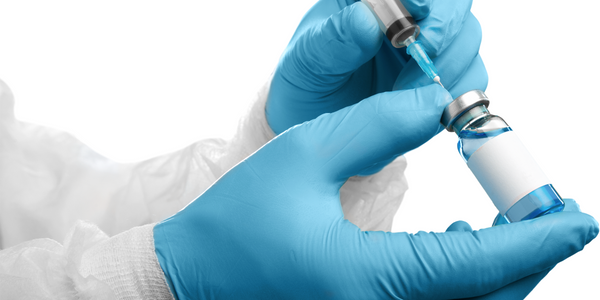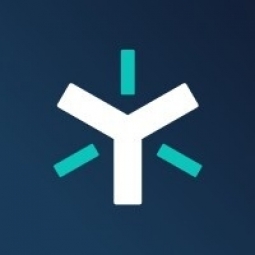Technology Category
- Application Infrastructure & Middleware - Data Exchange & Integration
- Platform as a Service (PaaS) - Application Development Platforms
Applicable Industries
- Life Sciences
- Pharmaceuticals
Applicable Functions
- Quality Assurance
Use Cases
- Inventory Management
- Regulatory Compliance Monitoring
Services
- System Integration
About The Customer
Decibel Therapeutics is a clinical-stage biotechnology company that was founded in 2015. The company is dedicated to discovering and developing transformative treatments to restore and improve hearing and balance. As a growth-stage biotech, Decibel has been a valuable partner in supporting clinical and regulatory operations, medical writing, biostatistics, and data management teams with a single repository for all documentation gathered from CROs and submitted to the FDA and other regulatory agencies. The company went public in 2021 and relies heavily on a global network of contract research organizations (CROs) to conduct comprehensive clinical trials.
The Challenge
Founded in 2015, Decibel Therapeutics is a clinical-stage biotechnology company that focuses on developing transformative treatments to restore and improve hearing and balance. As the company grew and went public in 2021, it became increasingly reliant on a global network of contract research organizations (CROs) to conduct comprehensive clinical trials. These CROs collected a variety of data, including visit times and dates, testing results, adverse event information, patient status, and more. The sheer volume of data collected necessitated a solution that could not only ensure the accurate intake of data from CROs but also apply rigorous governance over the data, consistent with Good Clinical Practices (GCP). Additionally, the solution needed to support the secure sharing of clinical trial data across external third parties.
The Solution
Decibel deployed Egnyte as their single source of truth for all regulated documentation. For large data sets coming in from CROs, Decibel uses Egnyte’s secure upload links, which are partitioned off from the rest of the internal file sharing system. Folder permissions and link expiration dates are used for additional controls. When Decibel takes part in smaller academic collaborations, it leverages Egnyte with a file structure for housing documents in lieu of a full-blown TMF. The Decibel team also benefits from Egnyte’s integrations with business apps, like Microsoft Teams. Any files shared within Teams are ultimately governed by Egnyte and as such, remain compliant. The integration between the two platforms has been a big time-saver for the group, as employees no longer must chase down team members looking for the latest document in Teams.
Operational Impact

Case Study missing?
Start adding your own!
Register with your work email and create a new case study profile for your business.
Related Case Studies.

Case Study
Case Study: Pfizer
Pfizer’s high-performance computing software and systems for worldwide research and development support large-scale data analysis, research projects, clinical analytics, and modeling. Pfizer’s computing services are used across the spectrum of research and development efforts, from the deep biological understanding of disease to the design of safe, efficacious therapeutic agents.

Case Study
Fusion Middleware Integration on Cloud for Pharma Major
Customer wanted a real-time, seamless, cloud based integration between the existing on premise and cloud based application using SOA technology on Oracle Fusion Middleware Platform, a Contingent Worker Solution to collect, track, manage and report information for on-boarding, maintenance and off-boarding of contingent workers using a streamlined and Integrated business process, and streamlining of integration to the back-end systems and multiple SaaS applications.

Case Study
Process Control System Support
In many automated production facilities, changes are made to SIMATIC PCS 7 projects on a daily basis, with individual processes often optimised by multiple workers due to shift changes. Documentation is key here, as this keeps workers informed about why a change was made. Furthermore, SIMATIC PCS 7 installations are generally used in locations where documentation is required for audits and certification. The ability to track changes between two software projects is not only an invaluable aid during shift changes, but also when searching for errors or optimising a PCS 7 installation. Every change made to the system is labour-intensive and time-consuming. Moreover, there is also the risk that errors may occur. If a change is saved in the project, then the old version is lost unless a backup copy was created in advance. If no backup was created, it will no longer be possible to return to the previous state if and when programming errors occur. Each backup denotes a version used by the SIMATIC PCS 7 system to operate an installation. To correctly interpret a version, information is required on WHO changed WHAT, WHERE, WHEN and WHY: - Who created the version/who is responsible for the version? - Who released the version? - What was changed in the version i.e. in which block or module of the SIMATIC PCS 7 installation were the changes made? - When was the version created? Is this the latest version or is there a more recent version? - Why were the changes made to the version? If they are part of a regular maintenance cycle, then is the aim to fix an error or to improve production processes? - Is this particular version also the version currently being used in production? The fact that SIMATIC PCS 7 projects use extremely large quantities of data complicates the situation even further, and it can take a long time to load and save information as a result. Without a sustainable strategy for operating a SIMATIC PCS 7 installation, searching for the right software version can become extremely time-consuming and the installation may run inefficiently as a result.

Case Study
ELI LILLY ADOPTS MICROMEDIA’S ALERT NOTIFICATION SYSTEM
Pharmaceutical production is subject to a strict set of enforced rules that must be adhered to and compliance to these standards is critically necessary. Due to the efforts of WIN 911’s strategic partner Micromedia, Lilly was able to adopt an alarm notification infrastructure that integrated smoothly with their existing workflows and emergency hardware and protocols. These raw energy sources enable the industrial process to function: electricity, WIN-911 Software | 4020 South Industrial Drive, Suite 120 | Austin, TX 78744 USA industrial steam, iced water, air mixtures of varying quality. Refrigeration towers, boilers and wastewater are monitored by ALERT. Eli Lilly identified 15000 potential variables, but limitations compelled them to chisel the variable list down to 300. This allowed all major alarms to be covered including pressure, discharge, quantity of waste water discharged,temperature, carbon dioxide content, oxygen & sulphur content, and the water’s pH.









